Arithmetic Overflow Error Converting Expression To Data Type Int.
Arithmetic overflow errors are a common issue in programming, particularly when working with numerical data types. This error occurs when the result of an arithmetic calculation exceeds the maximum value that can be stored in the chosen data type. In this article, we will explore the concept of arithmetic overflow errors, their causes, how to handle and prevent them, and the implications they can have on system behavior and data integrity. We will also delve into debugging techniques and advanced topics related to arithmetic overflow errors.
What is an arithmetic overflow error?
An arithmetic overflow error is a runtime error that occurs when a mathematical operation results in a value that exceeds the maximum range of the data type being used to store the result. This is particularly common when performing calculations using integer (INT) data types.
Explanation of the concept and how it occurs in arithmetic calculations
In simple terms, arithmetic overflow occurs when the calculated value is too large to fit within the range of the data type being used. For example, if we try to store the result of a calculation that exceeds the maximum value of an INT data type (-2,147,483,648 to 2,147,483,647 in SQL Server), an arithmetic overflow error will be thrown.
Examples of common scenarios leading to arithmetic overflow errors
1. In SQL queries, calculating the sum of a column that exceeds the maximum value of the INT data type.
2. Multiplying or adding large numbers that surpass the maximum value of the data type being used.
3. Performing calculations involving fractional numbers that cannot be stored accurately in an integer data type.
4. Attempting to convert a string or text representation of a number to an integer data type that cannot accommodate the value.
Causes of arithmetic overflow errors
There are several factors that contribute to arithmetic overflow errors. One major cause is the choice of an inappropriate data type, such as using an INT data type for calculations that require a larger range. Insufficient precision or scale can also lead to overflow errors in numeric or decimal data types.
Another cause is the failure to anticipate the range of values that can be generated during calculations. This often occurs when working with large datasets or complex algorithms where the potential range of values is not carefully considered.
Handling arithmetic overflow errors
When encountering an arithmetic overflow error, it is important to handle it gracefully to prevent disruption to the system and to provide useful information to the user or developer. One common error handling strategy is to use try-catch blocks, which allow for the detection and handling of runtime errors.
Within the catch block, appropriate error messages can be generated to inform the user or developer about the specific arithmetic overflow error encountered and suggest potential solutions. These error messages can be customized to provide specific information related to the context of the error.
Prevention of arithmetic overflow errors
Preventing arithmetic overflow errors requires careful consideration of data types and their limitations. Choosing an appropriate data type based on the expected range of values can help prevent overflow errors. For example, using a BIGINT data type instead of an INT can accommodate larger values. Using decimal or numeric data types with appropriate precision and scale can also prevent overflow errors in cases involving fractional numbers.
Additionally, implementing data type constraints and validation checks can help identify potential overflow situations and handle them before calculations are performed. This can involve range checks, value truncation, or, in some cases, the use of libraries or frameworks that provide more robust handling of numerical calculations.
Implications of arithmetic overflow errors
Arithmetic overflow errors can have significant consequences and impact on system behavior and data integrity. In some cases, the system may crash or become unstable when an overflow error occurs. This can lead to data loss, unexpected results in calculations, or incorrect values being stored in the database.
Arithmetic overflow errors can also affect the accuracy of calculations and undermine the reliability of the system. In financial or scientific applications, where precision is crucial, such errors can be particularly damaging.
Debugging arithmetic overflow errors
Identifying and troubleshooting arithmetic overflow errors can be a challenging task. However, by following a systematic approach, these errors can be resolved effectively. The following steps can be used to debug arithmetic overflow errors:
1. Identify the specific line of code or calculation that is triggering the error.
2. Examine the values being used in the calculation and verify if they exceed the maximum range of the data type being used.
3. Review any intermediate calculations or operations preceding the error and check for potential overflow scenarios.
4. Use debugging tools or techniques, such as breakpoints or printing variable values, to investigate the values being used in calculations.
5. Consider the possibility of implicit or explicit data type conversions that may lead to inconsistencies or overflow errors.
Further considerations and advanced topics
In addition to the basic concepts and techniques discussed above, there are advanced topics related to arithmetic overflow errors that may be worth exploring. For example, casting and explicit data type conversions can offer more control over the calculations and prevent overflow errors.
It is also important to consider the performance implications and trade-offs associated with different approaches to handling arithmetic overflow errors. Certain error handling strategies may introduce additional overhead or impact the performance of the system.
In scenarios where performance is critical, developers might need to strike a balance between accurate error handling and the efficiency of the system. This could involve optimizing calculations, utilizing hardware-specific instructions, or resorting to approximate calculations where precision is not crucial.
In conclusion, arithmetic overflow errors can have significant implications in software development. Understanding the causes, handling techniques, prevention strategies, and debugging processes related to these errors is crucial for creating reliable, accurate, and robust code. By implementing appropriate measures and best practices, developers can minimize the occurrence of arithmetic overflow errors and ensure the integrity of their applications and systems.
FAQs:
Q: What is the difference between an arithmetic overflow error and a syntax error?
A: An arithmetic overflow error occurs during runtime when a calculated value exceeds the maximum range of the data type being used. On the other hand, a syntax error is a compilation error that occurs due to invalid syntax or improper formatting of code.
Q: How can I prevent arithmetic overflow errors in my SQL queries?
A: To prevent arithmetic overflow errors in SQL queries, you can use appropriate data types for your columns and calculations. Consider the range of values that your calculations might produce and choose data types that can accommodate those ranges. It is also advisable to perform range checks and data validation before executing calculations.
Q: Can arithmetic overflow errors lead to incorrect results in calculations?
A: Yes, arithmetic overflow errors can lead to incorrect results in calculations. When the computed value exceeds the maximum range of the data type, the result may wrap around or overflow, resulting in unexpected or incorrect values.
Q: Is it possible to handle arithmetic overflow errors dynamically in code?
A: Yes, it is possible to handle arithmetic overflow errors dynamically in code. By using try-catch blocks, you can detect and handle these errors at runtime. Within the catch block, appropriate error messages or alternative calculations can be implemented.
Q: Are there any performance implications when handling arithmetic overflow errors?
A: Yes, handling arithmetic overflow errors can introduce performance implications. Certain error handling strategies, such as extensive validation checks or complex exception handling, may add overhead to the execution of code. Developers should balance accuracy in error handling with the performance requirements of their applications.
Sql Server Arithmetic Overflow Error Converting Expression To Data Type Int
How To Solve Arithmetic Overflow Error Converting Expression To Data Type Int?
Arithmetic operations are a fundamental part of many computer programs, allowing us to manipulate numerical data. However, sometimes we encounter errors, such as the “Arithmetic overflow error converting expression to data type int.” This error occurs when the result of an arithmetic operation goes beyond the maximum value that can be stored in the data type being used.
Understanding Arithmetic Overflow
In programming, each data type has a specific range of values it can hold. For example, the standard integer data type (int) in most programming languages can store values between -2,147,483,648 and 2,147,483,647. When performing arithmetic calculations, if the result exceeds the maximum value that the data type can hold, an arithmetic overflow error is thrown.
The Causes of Arithmetic Overflow Errors
There are several reasons why an arithmetic overflow error can occur:
1. Numeric Values: If the values involved in the arithmetic calculation are already near the maximum limit of the data type, performing an operation that exceeds the limit will trigger an overflow error.
2. Mathematical Operations: Certain arithmetic operations are more likely to cause overflow errors. These include multiplication, addition, and exponentiation. For instance, multiplying large values together may cause the result to exceed the maximum limit of the data type.
3. Database Operations: Arithmetic overflow errors can also occur when performing calculations within a database. This commonly happens when storing or processing numeric data in a database table.
Solving Arithmetic Overflow Errors
When faced with an arithmetic overflow error, developers have several potential solutions that can prevent or resolve the issue:
1. Increase Data Type Capacity: If the calculation involves large numbers that need to be stored, one option is to change the data type to one that has a larger capacity. For example, switching from int to bigint allows for larger numerical values to be stored. However, this solution may not always be feasible or efficient, considering the potential impact on memory and performance.
2. Adjust Calculation Logic: Refactoring the calculation logic can prevent overflow errors. By reviewing the formula or expression being used, developers can ensure that the result falls within the limits of the chosen data type. Modifying the calculation to use smaller numbers, rearranging the order of operations, or finding alternative methods can help avoid arithmetic overflow errors.
3. Inexact Rounding: In cases where precision beyond the data type’s capacity is not required, rounding the result can prevent overflow errors. Functions like ROUND, FLOOR, or CEILING can be used to round the result to a suitable value. However, this solution should be approached with caution, as rounding may introduce inaccuracies depending on the specific application.
4. Use Conditionals: Another approach is to incorporate conditionals into the code to handle potential overflow conditions. By checking the values before performing the calculation, developers can account for the possibility of an overflow and take appropriate actions, such as utilizing a different data type or displaying an error message to the user.
5. Split Calculations: In some cases, breaking down complex calculations into smaller, manageable steps can prevent arithmetic overflow errors. By dividing the calculation into multiple parts, developers can ensure that each step falls within the limits of the data type being used. This approach requires careful consideration of the overall algorithm and the potential impact on performance.
FAQs about Arithmetic Overflow Errors
Q: What is the significance of data types in programming?
A: Data types determine the range of values that can be assigned to variables and how they are processed in memory. Understanding data types is crucial for accurate calculations and preventing errors like arithmetic overflow.
Q: Can arithmetic overflow errors occur with data types other than int?
A: Yes, arithmetic overflow errors can occur with other data types, such as float or decimal. Each data type has its own range of values, and exceeding the boundaries of any data type can lead to overflow errors.
Q: Are there any language-specific methods to handle arithmetic overflow errors?
A: Yes, some programming languages provide built-in methods or attributes to detect and handle arithmetic overflow errors. For example, in C#, the “checked” keyword can be used to explicitly check for arithmetic overflow in expressions.
Q: How can I determine the maximum value of a data type in my programming language?
A: Most programming languages provide constants or functions to retrieve the maximum and minimum values for each data type. These can be easily accessed through the official documentation or online resources.
Q: Can I disable or ignore arithmetic overflow errors?
A: Some programming languages allow you to disable or ignore arithmetic overflow errors with specific compiler flags or settings. However, this is generally not recommended as it can lead to incorrect calculations and unexpected behavior.
In conclusion, arithmetic overflow errors can be frustrating when working with numerical data. However, by understanding the causes of these errors and implementing appropriate solutions, developers can ensure the accuracy and integrity of their calculations. Whether through adjusting data types, modifying logic, or employing conditionals, it is possible to overcome arithmetic overflow errors and create robust and reliable programs.
What Does Arithmetic Overflow Error Converting Expression To Data Type Int Mean?
In the world of programming, errors and exceptions are quite common. One such error that programmers often encounter is the “arithmetic overflow error converting expression to data type int.” This error typically occurs when performing mathematical operations on data that exceeds the range of the data type used.
To fully understand this error, we must delve into the concept of data types in programming. In most programming languages, including SQL, data types define the kind of values that can be stored and manipulated in variables or database columns. For example, the “int” data type in SQL represents whole numbers within a specific range.
When performing arithmetic operations, such as addition or multiplication, on variables or columns of type “int,” there is a limit to the range of values that can be accommodated. The limit for the “int” data type is often defined as -2,147,483,648 to 2,147,483,647 in most programming languages. If the result of such an operation exceeds this range, an “arithmetic overflow error” occurs.
Let’s consider an example to illustrate this error. Suppose we have a table in a database with a column of type “int” named “Quantity.” If we attempt to update the quantity of a particular item by adding a value larger than the maximum limit (2,147,483,647) to the existing quantity, an arithmetic overflow error will be triggered. This is because the resulting value is outside the range that an “int” data type can store.
Similarly, other mathematical operations such as subtraction, multiplication, or division can also lead to an arithmetic overflow error if the result exceeds the range of the data type being used. It’s important to note that this error is not exclusive to SQL. It can occur in various programming languages when dealing with integer calculations.
Why does this error occur?
The “arithmetic overflow error converting expression to data type int” error occurs to prevent data corruption or unexpected results. By raising an error, the programming language or database management system alerts the programmer or user that the result of an operation is outside the bounds of the data type being used.
When an operation exceeds the range of an “int” data type, there are a few potential causes for this error:
1. Incorrect calculations: This error may occur if there is a mistake in the calculation logic, leading to a result that exceeds the data type’s range. Double-checking the calculations can help identify and correct the error.
2. Insufficient data type range: Sometimes, the chosen data type may be too limited to accommodate the values required for certain calculations. In such cases, it may be necessary to use a larger data type, such as “bigint” or “numeric,” that can handle larger values.
3. Input data issues: If the input provided for the calculation exceeds the range of the chosen data type, an arithmetic overflow error may occur. It is essential to review the input data and ensure it falls within the acceptable range of the data type.
How to resolve the arithmetic overflow error?
When encountering the “arithmetic overflow error converting expression to data type int,” there are a few approaches to resolving the issue:
1. Check the calculations: Ensure that the calculations being performed are accurate and do not result in values that exceed the data type’s range. Review the formulas and logic to identify any errors.
2. Modify the data type: If the calculations require handling larger values, consider changing the data type of the variables or database columns involved in the operation. Switching to a larger data type, such as “bigint” or “numeric,” can help accommodate the extended range of values.
3. Validate input data: If the input provided for the calculation contains values outside the range of the data type, validate the input data before performing the calculation. Apply checks and constraints to ensure that the input falls within acceptable limits.
4. Use appropriate functions: Depending on the programming language or database management system being used, there may be specific functions available that can handle larger values or prevent arithmetic overflow errors. Research these functions and utilize them when necessary.
FAQs:
Q: Is the arithmetic overflow error limited to the “int” data type?
A: No, this error can occur with other data types as well. Each data type has its own range limit, and when results from arithmetic operations exceed those limits, an arithmetic overflow error is raised.
Q: Can I ignore the arithmetic overflow error and continue with the calculations?
A: It is generally not recommended to ignore arithmetic overflow errors. These errors indicate that the result of an operation is beyond the range that the data type can handle, which can lead to data corruption or unexpected results. It is better to resolve the error and ensure accurate calculations.
Q: Is there any way to determine the maximum range of a data type programmatically?
A: Yes, most programming languages and database management systems provide functions or methods to retrieve the maximum and minimum values for a particular data type. Check the documentation or language-specific references for more information.
Q: Can I prevent the arithmetic overflow error altogether?
A: While it may not be possible to prevent all arithmetic overflow errors, careful validation of input data, using appropriate data types, and double-checking calculations can significantly reduce the chances of encountering this error.
In conclusion, the “arithmetic overflow error converting expression to data type int” occurs when the result of a mathematical operation exceeds the range of the “int” data type. Understanding the cause of this error and implementing appropriate solutions, such as validating input data and using the correct data types, can help prevent and resolve this issue. By addressing the error promptly, programmers can ensure the accuracy and integrity of their calculations.
Keywords searched by users: arithmetic overflow error converting expression to data type int. Arithmetic overflow error converting expression to data type int in SQL, Arithmetic overflow error converting expression to data type int count, Arithmetic overflow error converting expression to data type tinyint, Arithmetic overflow error converting varchar to data type numeric, Arithmetic overflow error converting expression to data type datetime, Arithmetic overflow error converting numeric to data type numeric, Arithmetic overflow error converting float to data type numeric, Arithmetic overflow error converting nvarchar to data type numeric
Categories: Top 77 Arithmetic Overflow Error Converting Expression To Data Type Int.
See more here: nhanvietluanvan.com
Arithmetic Overflow Error Converting Expression To Data Type Int In Sql
In the realm of database management systems, SQL (Structured Query Language) plays a crucial role in handling various data operations. However, while working with SQL, users often encounter errors that can hinder the smooth execution of their queries and transactions. One such commonly encountered error is the “Arithmetic overflow error converting expression to data type int” in SQL. This error occurs when an arithmetic operation exceeds the maximum value that can be stored in the INT data type.
In this article, we will delve deep into the concept of arithmetic overflow, its causes, how to handle it, and provide some frequently asked questions (FAQs) to shed light on different aspects related to this error.
Understanding Arithmetic Overflow and its Causes:
Arithmetic overflow primarily occurs when performing calculations that exceed the maximum size limit of the data type being used. In the case of the “Arithmetic overflow error converting expression to data type int” in SQL, it specifically relates to calculations involving the INT data type.
The INT datatype is a widely used numeric data type in SQL, commonly used to store whole numbers. In SQL Server, it has a range of -2,147,483,648 to 2,147,483,647. The error occurs when the result of a calculation falls outside this range, resulting in an overflow error.
For instance, consider a scenario where you have a table that stores sales data. If you perform an aggregation of the sales amount, and the calculated sum is larger than 2,147,483,647 or smaller than -2,147,483,648, an arithmetic overflow error will be thrown.
Handling Arithmetic Overflow Errors:
To handle arithmetic overflow errors effectively, it is important to identify the cause and address it accordingly. Here are a few approaches to mitigate the occurrence of such errors:
1. Use a larger data type: If you consistently encounter arithmetic overflow errors, consider using a larger numerical data type such as BIGINT or DECIMAL instead of INT. BIGINT provides a larger range of values, while DECIMAL offers better precision.
2. Check input values: Ensure that the input data set falls within the valid range of the INT data type. Implement data validation strategies to prevent out-of-range values from reaching the calculation stage.
3. Adjust calculations: Review the calculations performed within your SQL statements and ensure they are logically accurate. If there are potential calculations that may surpass the INT data type limit, consider modifying them accordingly.
4. Handle exceptions: Implement exception handling mechanisms within your SQL code. By employing exception handling routines, you can catch and handle any potential arithmetic overflow errors gracefully without allowing them to halt the execution.
5. Use aggregate functions wisely: Be cautious while utilizing aggregate functions like SUM, AVG, MIN, MAX, etc. Make sure the aggregated result remains within the permissible range of the target data type.
FAQs:
Q: What is the difference between INT and BIGINT data types?
A: INT and BIGINT are both numeric data types in SQL, differing mainly in the range of values they can store. INT stores whole numbers within a range of -2,147,483,648 to 2,147,483,647, while BIGINT can store larger numbers in the range of -9,223,372,036,854,775,808 to 9,223,372,036,854,775,807.
Q: Can arithmetic overflow errors occur in other data types?
A: Yes, arithmetic overflow errors can occur in various other data types, not just INT. Each data type has its own specific range, and when calculations exceed that range, an arithmetic overflow occurs. It is important to consider the limitations of the specific data type being used.
Q: Are there any other ways to prevent arithmetic overflow errors?
A: Yes, there are additional preventive measures you can take to avoid arithmetic overflow errors. These include carefully designing data models and database structures, implementing input data validation, and regularly monitoring and analyzing data to identify potential issues before they cause errors.
Q: How can I identify which statement or calculation caused an arithmetic overflow error?
A: When an arithmetic overflow error occurs, the error message usually provides information about the specific statement or calculation that caused the error. By analyzing the error message and identifying the problematic code, you can focus on addressing the root cause of the error.
Q: Can I change the data type of an existing column to avoid arithmetic overflow errors?
A: Yes, it is possible to change the data type of an existing column to a larger data type, such as BIGINT, to avoid arithmetic overflow errors. However, it requires careful consideration, as changing the data type may impact other parts of the codebase and potential data type mismatches.
In conclusion, the “Arithmetic overflow error converting expression to data type int” in SQL can disrupt the seamless execution of queries and transactions. By understanding the causes of arithmetic overflow errors and following proper handling techniques, users can effectively mitigate these errors and ensure the smooth functioning of their SQL operations.
Arithmetic Overflow Error Converting Expression To Data Type Int Count
Arithmetic operations lie at the core of almost every programming language, enabling developers to create powerful and complex algorithms. However, alongside the benefits of mathematical calculations, there are certain issues that programmers must be cautious about, such as the arithmetic overflow error. In this article, we will delve into the world of arithmetic overflow errors, with a specific focus on the “converting expression to data type int count” error. We will explore its causes, implications, and potential solutions, while also addressing frequently asked questions to provide a comprehensive understanding of the topic.
What is an Arithmetic Overflow Error?
An arithmetic overflow error occurs when the result of an arithmetic operation exceeds the range that can be represented by a particular data type. Every data type in programming languages has a predetermined range of values it can store. In most languages, the int data type represents integer values within a specific range determined by the number of bits allocated for it. For instance, a 32-bit signed integer can store values ranging from -2,147,483,648 to 2,147,483,647.
The error message “converting expression to data type int count” is a specific type of arithmetic overflow error encountered when the count of an operation exceeds the maximum value an int data type can hold. This error usually occurs when performing calculations involving aggregate functions, such as COUNT(*), on large datasets.
Causes of Arithmetic Overflow Error: Converting Expression to Data Type Int Count
This error typically arises due to two main causes:
1. Insufficient range of the int data type: The count value produced by the arithmetic operation exceeds the maximum value that can be stored in an int data type. Since the int type is commonly used for counting purposes, it is susceptible to this type of overflow error.
2. Large dataset: When dealing with large datasets, the resulting count might surpass the range of the int data type. As a result, the error occurs during the conversion of the expression to an int count.
Implications of the Arithmetic Overflow Error: Converting Expression to Data Type Int Count
The implications of this error can vary depending on the programming language and the specific scenario. However, some common consequences include:
1. Data loss: Due to the limited range of the int data type, any count value exceeding its maximum value will be truncated or “wrapped around.” This can lead to inaccurate results and potential data loss, impacting the integrity of the data being processed.
2. Inconsistent behavior: In some cases, the error might cause unexpected behavior or program crashes, as it disrupts the normal flow of execution. This can lead to unreliability in software systems and hinder the proper functioning of applications.
Solutions to Arithmetic Overflow Error: Converting Expression to Data Type Int Count
When encountering the “converting expression to data type int count” error, several approaches can help mitigate the issue:
1. Use a larger data type: One solution is to switch to a data type that offers a larger range, such as bigint or numeric. These data types can accommodate larger counts and prevent the overflow error. However, it is important to consider the potential impact on memory and performance when using larger data types.
2. Avoid casting: When performing calculations, ensure that the intermediate or final results are not cast to an int data type. Instead, maintain the results in a data type that can handle larger values.
3. Use error handling mechanisms: Programming languages provide error handling mechanisms, such as try-catch blocks or exception handling, to detect and manage arithmetic overflow errors. By implementing robust error handling practices, developers can gracefully handle and recover from such errors, preventing application crashes and data loss.
4. Split calculations into subsets: If dealing with extremely large datasets, consider splitting the calculations into smaller subsets rather than performing operations on the entire dataset at once. This approach reduces the likelihood of encountering an overflow error and allows for more manageable processing.
FAQs (Frequently Asked Questions)
Q1: Is the “converting expression to data type int count” error limited to a specific programming language?
A1: No, this error can occur in various programming languages that use the int data type, such as SQL, C#, Java, and more.
Q2: Can I prevent the arithmetic overflow error completely?
A2: While it may not be possible to prevent this error entirely, adopting best practices like using appropriate data types and error handling can significantly minimize its occurrence.
Q3: Are there any performance implications when using larger data types?
A3: Yes, larger data types might consume more memory and potentially impact performance. Therefore, it is crucial to carefully balance data type selection with memory considerations and application requirements.
Q4: How can I handle the arithmetic overflow error in my SQL queries?
A4: In SQL, you can use the TRY-CATCH construct to identify and handle arithmetic overflow errors. Using appropriate error handling logic, you can gracefully handle these errors within your queries.
Q5: Can I assume that an arithmetic operation will always result in an overflow error if it involves large numbers?
A5: Not necessarily. The occurrence of an arithmetic overflow error depends on the data types and ranges involved in the operation. It is essential to understand the range of data types and perform calculations accordingly.
In conclusion, understanding and addressing arithmetic overflow errors, specifically the “converting expression to data type int count” error, is crucial to ensure accurate calculations and maintain data integrity. By implementing the suggested solutions and adopting best practices, developers can effectively handle these errors and mitigate their impact in programming projects.
Images related to the topic arithmetic overflow error converting expression to data type int.

Found 24 images related to arithmetic overflow error converting expression to data type int. theme




































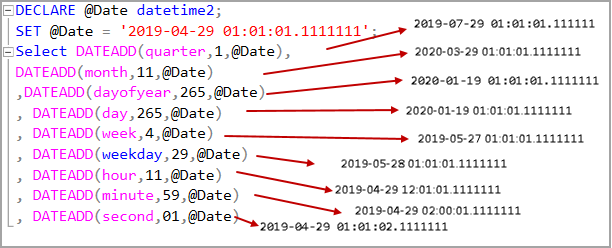

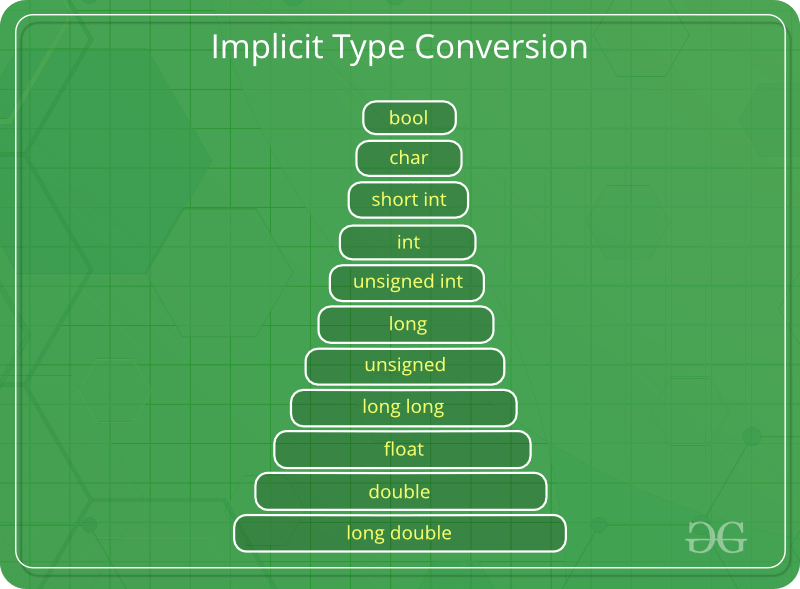

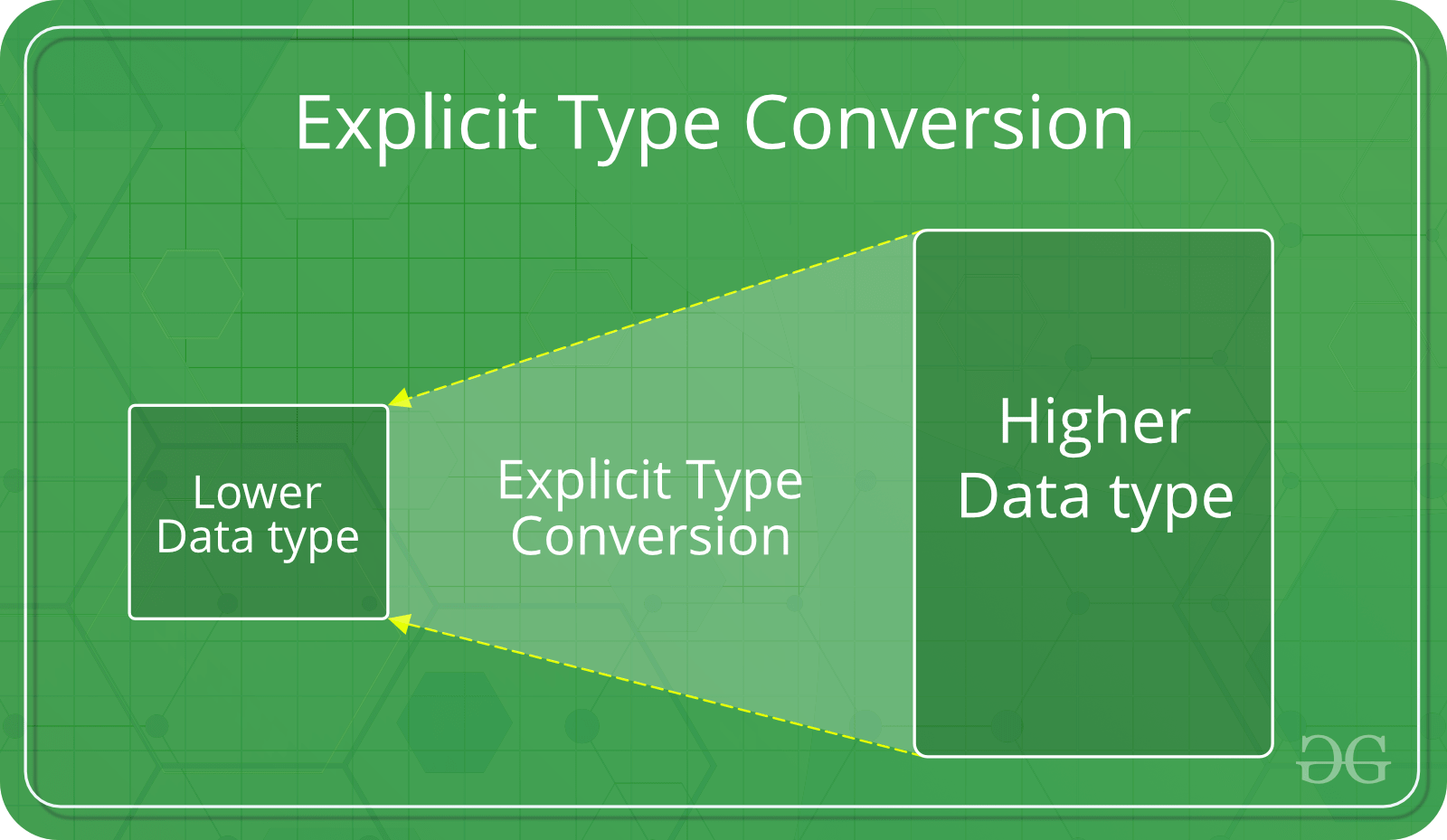

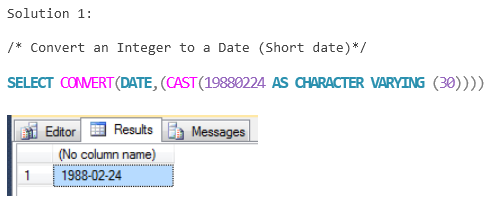



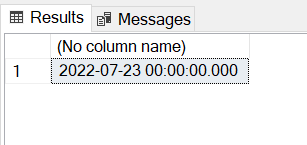

Article link: arithmetic overflow error converting expression to data type int..
Learn more about the topic arithmetic overflow error converting expression to data type int..
- Arithmetic overflow error converting expression to data type int
- Fix “Arithmetic overflow error converting expression to data …
- Arithmetic Overflow Error Converting … – Position Is Everything
- Fix “Arithmetic overflow error converting expression to data …
- SQL Server Error Messages – Msg 8115
- Fix “Arithmetic overflow error converting IDENTITY to data type …
- Arithmetic Overflow Error Converting … – Position Is Everything
- Arithmetic overflow error converting expression – Expert-Only
- Arithmetic overflow error converting … – Microsoft Learn
- SQL Server returns “Arithmetic overflow error converting …
- Arithmetic overflow error converting … – SQLServerCentral
- Arithmetic overflow error converting expression to data type int …